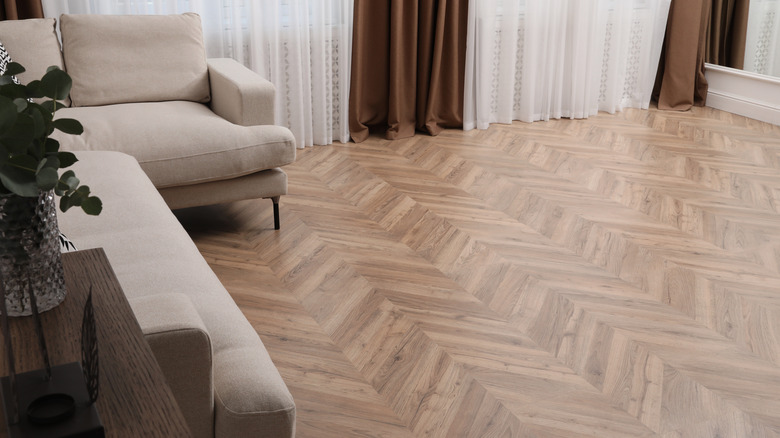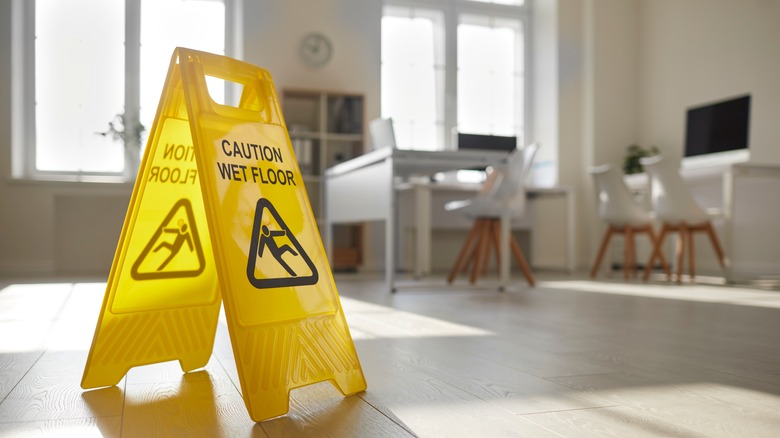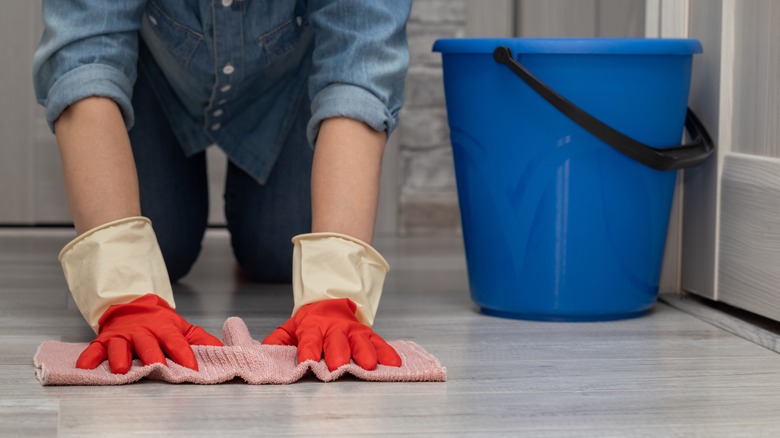Slippery Linoleum Floors: Why They Happen And What To Do About It
We may receive a commission on purchases made from links.
Imagine walking on your kitchen's linoleum floor, coffee in hand, only to find yourself participating in an unintentional twist 'n' slide performance worthy of a sitcom's slapstick scene. Many appreciate the intricate patterns and vibrant colors that go unrivaled by several other flooring solutions. But within the smooth, often polished surface, linoleum's real underbelly shows when it becomes the slick stage for precarious and often unexpected twirls. The culprits? A myriad of household nuisances: think about an overlooked spill, dust, or the wrong use of cleaning products. A report by the National Safety Council dubs falls as the third leading cause of preventable injury-related deaths in the United States, behind poisoning and motor vehicles. Such figures provide a glimpse into the menace our residential floors can become when unintentionally turned into ice rinks.
So, what do you do about your slippery linoleum floor? Seal off the kitchen? Ban the use of cleaning products? No, you fight slick with smart solutions. Proper cleaning and preventative measures can help mitigate the slippery beast that your floor can become. Adding anti-slip floor mats in high-traffic or wet-prone areas and ensuring proper footwear can help you cut the risk dramatically. Remember, the battle against slippery linoleum floors isn't merely about housekeeping; it's a commitment to safety for your family and guests.
Why your linoleum floor is slippery
One of the most prominent causes of slippery linoleum floors is moisture. Case in point: water. It's clear, clean, and harmless until it forms a glossy, thin, treacherous film on your once-secure footing. Or let's talk about other spills. Milk, wine, aloe vera juice, and poolside margaritas might come off as seemingly harmless gastronomic delights, but they can stage an unseen slippery mess under your feet. The same is true for excess humidity.
Next in our lineup of usual suspects for slippery linoleum floors are cleaning products and floor waxes. Picture that moment when your zeal for an immaculate sheen backfires, and the very products designed to clean and shine your linoleum floors become treacherous tools of slippery chaos. Oil-based or incorrectly diluted cleaners, when not rinsed thoroughly, leave behind a sinister residue that instigates slipperiness. And don't be fooled by wax and polish for floors; when excessively applied or ill-maintained, they can be the secret assailants behind a pristine linoleum floor gone rogue.
Dust — you wouldn't think of it as a slipperiness culprit, but when it accumulates, it can form a thin, slippery layer, effectively reducing traction. Also, let's not discount other everyday heroes turned foes. An accidental spill of lubricants or buildup of hairspray, and your linoleum floor transforms into an indoor thrill ride.
How to make linoleum floor less slippery
Before you even think about slip-resistant treatments, clean your linoleum floor. Sprint across that floor with your broom or vacuum, then follow up with a potent mopping solution. This dream team prances across your floor, stripping away the oily residues and additional sneaky culprits that might conspire to send you skidding. Next, turn your attention to the relatively new kid on the block: anti-slip treatment for floors. These work by improving the friction coefficient, and one such champion is the SKID SAFE Water-Based No-Slip Sealer & Finish on Amazon. Just add some to your cleaning bucket and transform your mopping solution into a safety shield that forms a slip-resistant film on your floor.
Next, in your endeavor to make linoleum flooring less slippery, usher in magnesium powder. As the water evaporates, it leaves behind a layer of magnesium that levels up your linoleum floor's slip resistance. Regular application will ensure your floor stays safe indefinitely. But what if your linoleum is in a spot prone to oils and greases? Think of the kitchen or garage — Here, an anti-slip treatment may fall short. Enter degreasing agent, ready to eradicate any trace of grease or oil, leaving you with a pristine and non-slip area.


